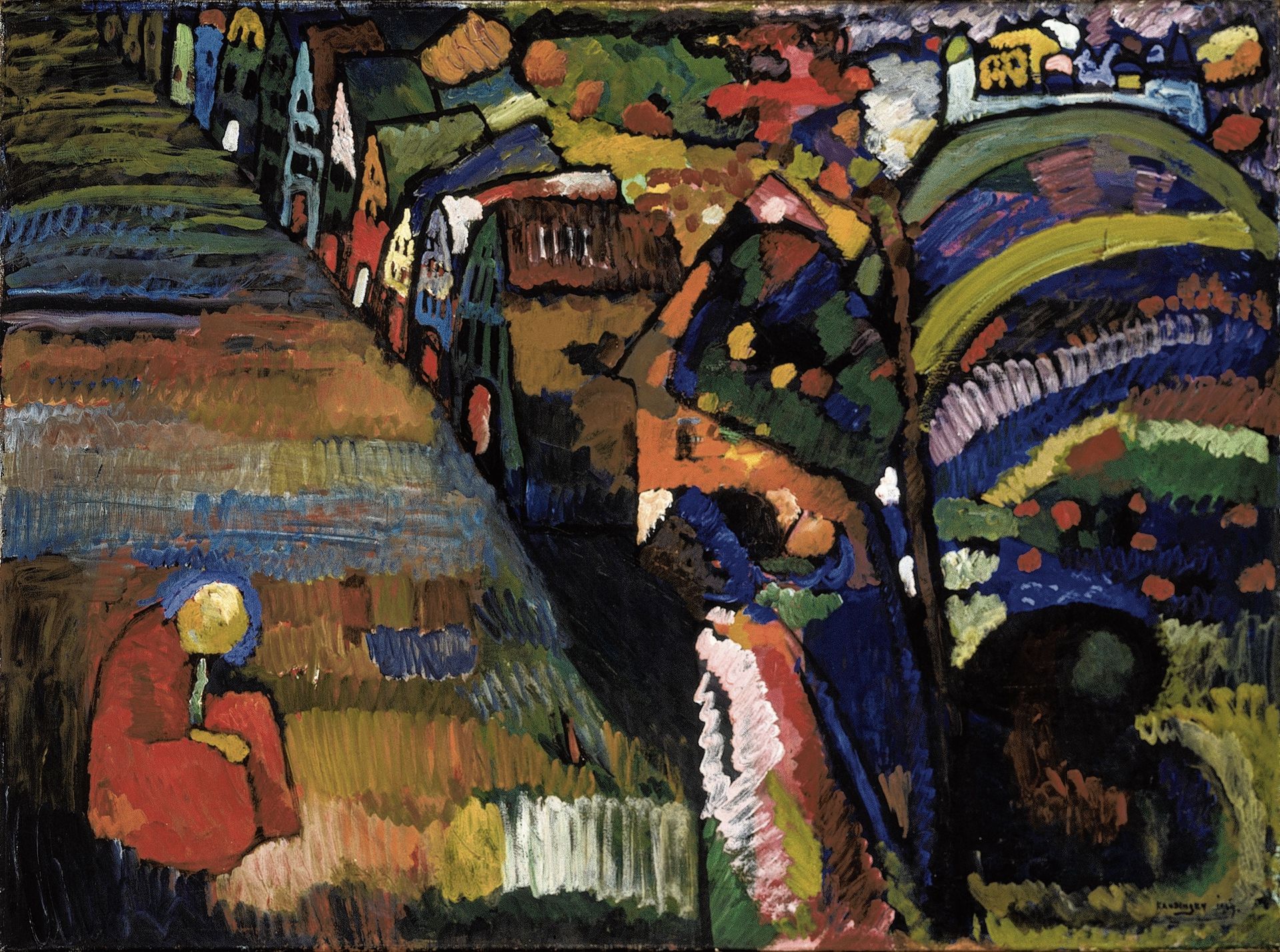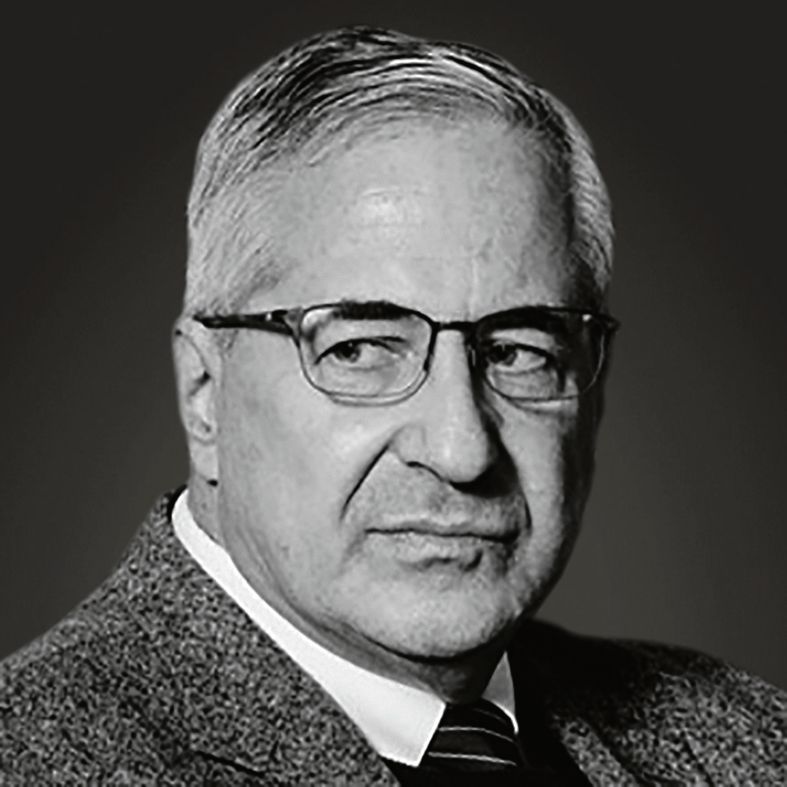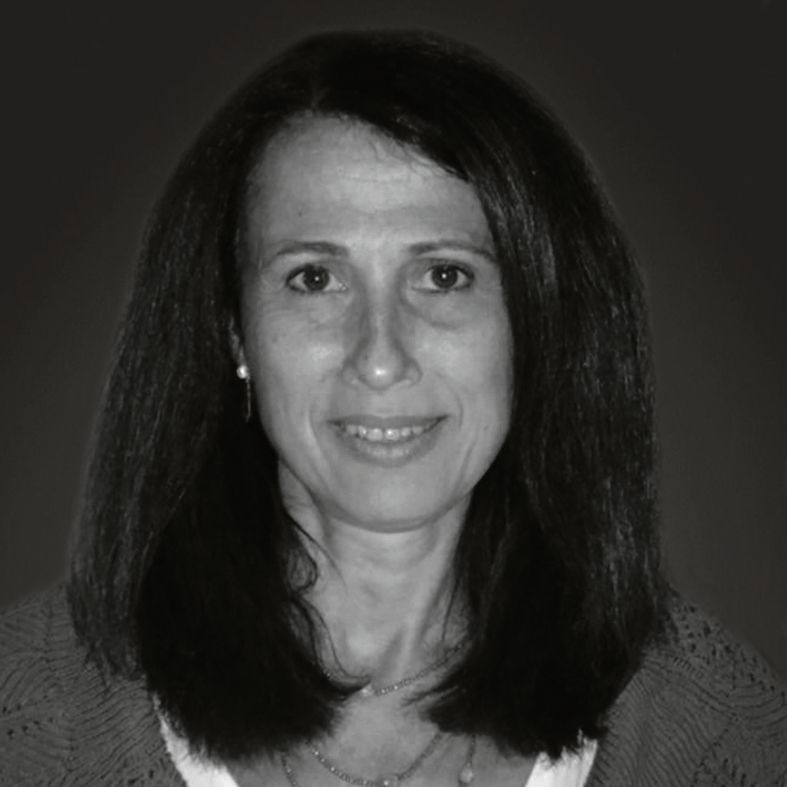News:
Schande dat deze roofkunst in het museum mag blijven hangen - It is shameful that looted art can remain in the museums
Roofkunst Het belang van een schilderij voor een museum speelt in Nederland ten onrechte een rol bij het wel of niet teruggeven van roofkunst, schrijven Wesley Fisher en Anne Webber.
(Original English text below)

Eind 2001 richtte de Nederlandse regering de Restitutiecommissie op, een onafhankelijk panel voor de afhandeling van claims op nazi-roofkunst in Nederlands openbaar bezit. Volgens het algemeen beleid van de commissie zou verlies van kunstwerken door joodse gezinnen vanaf 12 mei 1940, de datum van de nazi-bezetting, als onvrijwillig worden beschouwd en werd elke verkoop gezien als gedwongen, tenzij er specifiek bewijs van het tegendeel bestond. Dergelijke kunst moest worden teruggegeven.
Zo’n 3.800 kunstwerken die aan het eind van de oorlog door de geallieerden naar Nederland waren teruggestuurd om te worden teruggegeven, bleven altijd binnen de Nederlandse Kunstbezit-collectie, ook wel bekend als de NK-collectie. Ze waren nooit teruggegeven, en voordat de Restitutiecommissie in 2002 aan het werk ging, waren gemaakte claims op deze werken regelmatig op niets uitgelopen. Dat restitutiebeleid werd door de Nederlandse regering zelf beschreven als „kil en bureaucratisch”. Maar sinds 2002 zijn enkele honderden NK-werken teruggegeven aan hun rechtmatige eigenaars of hun erfgenamen. Nederland was terecht trots op dit record.
Maar in 2013 besloot de Nederlandse regering een nieuw criterium voor restitutie toe te voegen. Vaststelling van onvrijwillig bezitsverlies alleen zou geen garantie zijn voor restitutie. Nu zou er een „belangenafweging” worden gemaakt. Het ‘belang’ van de eiser om zijn kunstwerk terug te krijgen, zou worden afgewogen tegen het belang van het museum om het te houden. Bepaalde de commissie dat het ‘belang’ van het museum groter was, dan bleef het kunstwerk in het museum en ontving de eiser zelfs nog geen compensatie.
Deze beleidsverandering viel samen met de voltooiing van de eerste onderzoeksfase binnen Nederlandse musea naar de identificatie van roofkunst die door de musea was verworven sinds de nazi’s in 1933 aan de macht kwamen.
In april 2013 besliste de commissie over de eerste gevallen door middel van deze belangenafweging. Het betrof de claims op drie kunstwerken in Nederlandse musea die eigendom waren geweest van Richard Semmel, een joodse zakenman en verzamelaar uit Berlijn die in 1933 naar Nederland was gevlucht toen de nazi’s aan de macht kwamen. In 2009 had een claim voor een ander schilderij van Semmel in de Nederlandse Kunstbezit-collectie succes en het schilderij keerde terug, maar in 2013 hadden de claims van Semmel een andere uitkomst. De commissie erkende dat het verlies van de schilderijen opnieuw onvrijwillig was en te wijten aan nazi-vervolging. Toch luidde het advies dat twee van de schilderijen in de musea moesten blijven, omdat ze voor hen ‘van groot belang’ waren, en het belang van restitutie van het eigendom van de eisers hier niet tegenop woog.
In het geval van het derde schilderij stelde de commissie dat het wel kon worden teruggegeven omdat het museum ‘weinig of geen belangstelling’ had. De commissie voegde een nieuw criterium aan het besluitvormingsproces toe door de eigendomsrechten van de twee musea die de schilderijen van Semmel behielden te stellen boven die van de eisers.
Wereldwijde schokgolf
Het besluit veroorzaakte een wereldwijde schokgolf. Als bezit van roofkunst zwaarder moest wegen dan ‘rightful ownership’ hoefde geen enkel Nederlands museum ooit nog een kunstwerk terug te geven. Als het museum een geroofd schilderij wilde behouden, werd het eisers die al zeventig tot tachtig jaar gedwongen zonder hun bezit leefden per definitie onmogelijk gemaakt om hun ‘emotionele band’ ermee aan te tonen. Als de wettelijke erfgenamen na zeventig jaar geen directe afstammelingen meer waren, werkte dat nog verder in hun nadeel.
De belangenafweging leek niet erg evenwichtig. De commissie hield vol dat er niets veranderd was, maar eisers wisten dat zo net nog niet. Zij vonden het zorgwekkend om claims in te dienen in een procedure met een bindend advies en beperkte mogelijkheid tot beroep. Hun bezorgdheid nam nog toe toen in juni 2015 werd aangekondigd dat belangenafweging ook van toepassing zou worden op kunstwerken in de Nederlandse Kunstbezit-collectie.
Een claim op een in oktober 1940 verworven Kandinsky-schilderij in het Stedelijk Museum in Amsterdam leek in veel opzichten een testcase voor de Nederlandse toewijding aan restitutie. Hoe zou de commissie omgaan met de claim en het restitutierecht? Begin november publiceerde de commissie haar advies. Hoewel werd toegegeven dat de verkoop verband hield met vervolging vond de commissie ondubbelzinnig dat het schilderij in het museum moest blijven.
Het merendeel van het 22 pagina’s tellende besluit zijn gewijd aan een uiterst gedetailleerde uiteenzetting van de feiten inzake de claim. In één enkele slotparagraaf wordt het standpunt van het museum over het belang van het schilderij in haar collectie herhaald. Dit is niet verder uitgewerkt, de commissie stelt alleen dat het standpunt van het museum overeen „stemt [...] met het eigen oordeel van de commissie”, zonder verdere toelichting van deze redenering. De door de eiseres verklaarde mate van gehechtheid aan het schilderij wordt resoluut verworpen. De commissie stelt dat zij geen enkele „uit het verleden te verklaren emotionele of andere intense binding heeft met het werk”.
Door deze ontwikkelingen loopt Nederland het risico om van leider in kunst-restitutie tot paria te verworden. Het laat zien dat als een schilderij waardevol genoeg is, feiten en beleid kunnen worden aangepast, zodat een museum het kan behouden. De maatschappelijke verplichting om zulke eigendommen terug te geven, wordt terzijde geschoven. De bewijslast is verschoven. Uit recentere besluiten blijkt dat onvrijwillig verlies niet langer het hoofdprincipe is, en dat een uniek Nederlands idee is gerezen; dat joodse individuen onder de nazi-bezetting toch handelingsvrijheid hadden.
Hiërarchie van verlies
De commissie spreekt in haar schriftelijke besluiten zelfs van een hiërarchie van verlies, waarbinnen inbeslagname en confiscatie volgens hen zwaarder wegen dan gedwongen verkoop. Dit maakte weinig verschil voor de vervolgden, in doodsangst en zonder inkomsten, met geblokkeerde bankrekeningen en zonder bewegingsvrijheid, zich bewust van de wrede jodenvervolging die zich in heel Europa voltrok. Het lijkt erop dat in Nederland anno 2018 het kleinste en kilste onderscheid wordt aangegrepen om musea hun collecties intact te kunnen laten houden.
Het resultaat van deze veranderingen in de beoordeling van verlies, samen met de toepassing van belangenafweging, is zichtbaar in de Nederlandse restitutie-cijfers, die een scherpe daling van het cumulatieve gemiddelde restitutiegehalte laten zien, van 100 procent in 2002 tot 34 procent in 2018.
Tegelijk met de publicatie van het Kandinsky-besluit ontstond een nieuwe procedure voor claims aan het adres van musea in Nederland. Het idee, dat twee jaar geleden werd aangekondigd door de minister van Cultuur, hield in dat eisers en musea niet meer naar de commissie hoefden voor een bindend advies. In plaats daarvan konden ze gezamenlijk verantwoording dragen voor het bereiken van een wederzijds bevredigende uitkomst.
Nu durven eisers zeker geen claims meer in te dienen bij de Restitutiecommissie, aangezien ze terecht vrezen voor een oneerlijk onderzoek en een ongegronde uitkomst. En het valt nog te bezien of de nieuwe claimprocedure ooit zal worden toegepast. Waarom, als belangenafweging doorslaggevend is, zou enig Nederlands museum instemmen met een minnelijke schikking van een claim, als al bekend is dat de commissie waarschijnlijk voorrang zal geven aan hun belangen, ongeacht de omstandigheden van het bezitsverlies?
Nederland loopt ‘uit de pas’
Twintig jaar geleden omarmde Nederland, evenals 43 andere regeringen, het principe van ‘just and fair’ oplossingen, aangenomen tijdens de Washington Conference on Holocaust-Era Assets in 1998. Stuart Eizenstat, de Amerikaanse staatssecretaris die over de Washington Principles onderhandelde, zei vorige week in Berlijn dat de Nederlandse belangenafweging „volledig in strijd is met de Washington Principles”. Volgens hem waren de principes „niet bedoeld om te focussen op het belang van een museum om een kunstwerk te behouden”. Hij stelde dat Nederland „uit de pas” liep en spoorde de Nederlandse regering aan tot heroverweging.
De ‘rechtvaardige en billijke oplossing’ was bedoeld om de slachtoffers van de nazi’s gerechtigheid en billijkheid te bieden. In Nederland zijn dit principe en de beginselen die ten grondslag liggen aan de oprichting van de Nederlandse Restitutiecommissie sinds 2002, nu op hun kop gezet. De onafhankelijkheid van de Restitutiecommissie wordt in twijfel getrokken.
De Nederlandse regering heeft de hoop vernietigd die twintig jaar geleden tijdens de Washington Conference is gewekt; dat rechtvaardigheid en billijkheid zouden zegevieren en dat geroofde eigendommen zouden worden teruggegeven aan de rechtmatige eigenaren. Wie nu in Nederland een claim durft in te dienen, moet wel moedig zijn.
Wesley Fisher, Conference on Jewish Material Claims Against Germany and World Jewish Restitution Organization. Anne Webber, Commission for Looted Art in Europe. De auteurs vertegenwoordigen belangrijke Joodse organisaties die betrokken zijn bij de wereldwijde restitutie van nazi-roofkunst.
English Text
Art Restitution in the Netherlands has been turned on its Head, write Wesley Fisher and Anne Webber
At the end of 2001, the Dutch government established the Restitutions Committee, an independent panel to deal with claims for Nazi-looted art in Dutch public possession. The guiding policy of the Committee was that loss of artworks by Jewish families from 12 May 1940 onwards, the date of the Nazi occupation would be presumed to be involuntary and any sales considered as forced, unless there was specific evidence to the contrary. Such art was to be restituted.
Some 3,800 works of art returned to Holland by the Allies at the end of the war for the purpose of restitution had remained in the Dutch national collection, known as NK works. They had not been returned, and, before the Restitutions Committee began work in 2002, claims made for them had frequently failed. That restitution policy was described as ‘cold and bureaucratic’ by the Dutch government itself. However, since 2002, several hundred NK works of art have been returned to their rightful owners or their heirs. The Dutch have been justifiably proud of this record.
But in 2013 the Dutch government decided to add a new criterion for restitution. Determination of involuntary loss would not alone guarantee restitution .Now there would be a ‘balance of interests’ test. The ‘interest’ of the claimant in having their work of art returned to them would be weighed against the museum’s interest in keeping it. If the Committee decided that the museum’s ‘interest’ was greater, the artwork would stay in the museum and the claimant would not even receive compensation. This policy change coincided with Dutch museums completing the first stage of research to identify looted works of art acquired by the museums since the Nazis came to power in 1933.
In April 2013 the first cases utilising the balance of interests test were decided by the Committee. They involved claims for three works of art in Dutch museums which had been owned by Richard Semmel, a Jewish businessman and collector from Berlin who had fled to the Netherlands in 1933 when the Nazis came to power. In 2009 an earlier claim for a Semmel painting in the NK collection was successful and the painting returned. But in 2013 the Semmel claims did not have the same outcome. The Committee agreed the loss of the paintings was again involuntary and due to Nazi persecution. But, the decision was that two of the paintings must stay in the museums as they were ‘of major importance’ to them and this outweighed the interest of the claimants in having their property back. In the case of the third painting, the Committee said it could be returned because the museum considered it ‘of little or no interest’.
The Committee added a further new criterion to the decision-making process in stating that the ownership rights of the two museums which retained the Semmel paintings were greater than those of the claimants.
The decisions sent shockwaves across the world. If possession of looted art was to outweigh rightful ownership, then no Dutch museum would ever have to give a work of art back. If the museum wanted to keep a looted painting, it would by definition be impossible for claimants, forcibly deprived of their property for 70-80 years, to prove their ‘emotional attachment’ to it. If, after 70 years, the legal heirs were no longer direct descendants, that would additionally count against them.
The ‘balance of interests’ test didn’t seem very balanced. The Committee asserted that nothing had changed, but claimants were not so sure. They began to be concerned about submitting claims to a process where the decision is binding and there is limited recourse to appeal. In June 2015, their concerns grew when it was announced that the balance of interests test was also to be applied to works of art in the NK collection.
A claim for a Kandinsky painting in Amsterdam’s Stedelijk Museum, acquired in October 1940, seemed in many ways a test case for the Dutch commitment to restitution. How would the Committee treat the claim and the right to restitution? At the beginning of November the Committee published its decision. While conceding that the sale was linked to persecution, the Committee was unequivocal that the painting must stay in the museum.
Most of the 22 pages of the decision are given to examining in untiring detail the factual issues in the claim. A single concluding paragraph repeats the museum’s position on the importance of the painting to its collection. This is unexamined, the Committee merely stating that the museum’s view ‘is in accordance with the Committee’s own opinion’ the reasoning for which is not explained. The claimant’s expressions of attachment to the painting are firmly dismissed. The Committee asserts she is without ‘any past emotional or other intense bond with the work’.
From being a leader in art restitution, these developments put the Dutch at risk of becoming a pariah. They have shown that if a painting is valuable, facts and policies may be adjusted to enable a museum to keep it. The societal obligation to return such property is discarded. The burden of proof has been shifted. According to the more recent decisions, involuntary loss is no longer the guiding principle and a uniquely Dutch idea that Jewish individuals were somehow in principle able to act freely under Nazi occupation was introduced.
The Committee in its written decisions even establishes a hierarchy of loss in which they say that seizure and confiscation rank higher than forced sale. To the persecuted, in fear of their lives, with no access to income, bank accounts blocked, no freedom of movement, aware of the brutal persecution of Jews taking place across Europe, there was little difference. In Holland in 2018 it seems that the smallest and most chilling distinctions are being made in order to allow museums to keep their collections intact.
The result of these changes in assessing what constitutes loss together with the balance of interests test is reflected in the Dutch restitution figures which show a steep decline in the cumulative average restitution rate from 100% in 2002 to 34% in 2018.
At the same time as the Kandinsky decision was published, a new procedure for claims to museums in the Netherlands came into being. The idea, announced by the Minister of Culture two years ago, was that claimants and museums would not have to submit to the Committee for a binding decision. Instead they could be jointly responsible for reaching a mutually satisfactory solution.
Claimants are certainly now afraid to make claims to the Restitutions Committee since they have every reason to fear they will receive neither a fair hearing nor a just outcome. As regards the new claims procedure, it remains to be seen if it will ever be used. While the balance of interests test holds sway, why would any Dutch museum agree to try to reach an amicable resolution of a claim when they know they can rely on the Committee to give primacy to their interests, whatever the circumstances of loss?
Twenty years ago the Dutch, like 43 other governments, espoused the principle of ‘just and fair’ solutions, adopted at the 1998 Washington Conference on Holocaust-Era Assets. Stuart Eizenstat, the US Under-Secretary of State who negotiated the Washington Principles, said last week in Berlin that the Dutch balance of interests test is “totally contrary to the Washington Principles”. The Principles, he said were “not intended to focus on the interest of a museum in keeping a work of art”. The Dutch, he said were “out of step” and he urged the Dutch government to go back and reconsider.
The ‘just and fair solution’ was intended to provide justice and fairness for the victims of the Nazis. In Holland, this principle, and those underpinning the establishment of the Dutch Restitutions Committee since 2002, have been turned on their head. The independence of the Restitutions Committee has been thrown into doubt.
The Dutch government has dashed the hopes raised 20 years ago at the Washington Conference that fairness and justice would prevail and that looted property would be returned to its rightful owners. It will be a rash claimant who will dare to submit a claim to Holland now.
Wesley Fisher, Conference on Jewish Material Claims Against Germany and World Jewish Restitution Organization, and Anne Webber, Commission for Looted Art in Europe.
The authors represent major Jewish organizations concerned with restitution of Nazi looted art worldwide
https://www.nrc.nl/nieuws/2018/12/07/schande-dat-deze-roofkunst-in-het-museum-mag-blijven-hangen-a3059917




